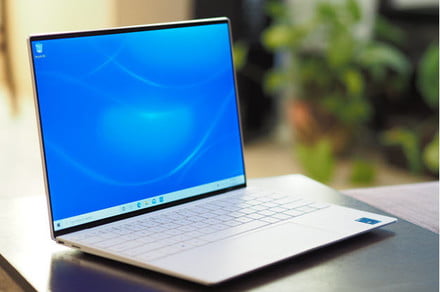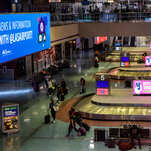Advertising Trends and Best Practices: What Works in Today’s Digital Marketing Landscape
The digital advertising ecosystem has undergone dramatic transformation over the past few years, and banner advertising has evolved alongside these changes to remain a cornerstone of online marketing strategies. As we navigate through 2025, understanding the latest trends and best practices in banner advertising is crucial for marketers who want to maximize their return on investment and effectively reach their target audiences in an increasingly competitive digital environment.
One of the most significant trends shaping banner advertising today is the shift toward interactive and immersive ad experiences. Static banner ads, while still effective in certain contexts, are being supplemented and often replaced by rich media formats that engage users through animation, video, and interactive elements. These dynamic banners can include features like expandable panels, embedded forms, product carousels, and even mini-games that encourage user participation and create memorable brand experiences.
The rise of programmatic advertising has revolutionized how banner ads are bought, sold, and optimized. Real-time bidding (RTB) systems now allow advertisers to purchase ad inventory instantaneously based on user data and campaign parameters. This automation has made banner advertising more efficient and targeted than ever before, enabling marketers to reach specific audience segments with precision while optimizing costs through competitive bidding processes.
Native advertising principles are increasingly being applied to banner design, creating ads that blend more seamlessly with the surrounding content. These native-style banners maintain the visual style and tone of the website or platform where they appear, resulting in higher engagement rates and less ad blindness among users. The key is to create banners that provide value to users while still clearly identifying the content as sponsored or promotional.
Personalization has become a fundamental expectation in digital advertising, and banner ads are no exception. Advanced data analytics and machine learning algorithms enable the creation of highly personalized banner experiences that adapt to individual user preferences, browsing history, and demographic characteristics. Dynamic product recommendations, location-based offers, and behavioral targeting all contribute to more relevant and effective banner campaigns.
Video content integration within banner formats represents another major trend. Video banners can include auto-playing video backgrounds, embedded video players, or expandable video experiences that activate when users interact with the banner. These formats combine the engagement power of video content with the placement flexibility of traditional banner advertising, though they require careful consideration of file sizes and loading times to maintain optimal user experience.
Mobile-first design principles have become mandatory rather than optional in banner advertising. With mobile devices generating the majority of web traffic, banners must be optimized for smaller screens, touch interactions, and varying network conditions. This includes using appropriate sizing, ensuring text readability, optimizing loading speeds, and creating touch-friendly interactive elements that work well on both smartphones and tablets.
The integration of social proof elements within banner ads has proven highly effective for building trust and encouraging conversions. Customer reviews, testimonials, user-generated content, and social media endorsements can all be incorporated into banner designs to provide credibility and reduce purchase hesitation. Real-time social proof, such as showing how many people are currently viewing a product or how many purchases have been made recently, can create urgency and encourage immediate action.
Artificial intelligence is playing an increasingly important role in banner advertising optimization. AI-powered tools can automatically test thousands of creative variations, optimize bidding strategies in real-time, and predict which banner combinations will perform best for specific audience segments. Machine learning algorithms analyze performance data continuously, making automatic adjustments to improve campaign effectiveness without requiring manual intervention.
Privacy considerations and regulatory compliance have become critical factors in banner advertising strategy. With the implementation of GDPR, CCPA, and other privacy regulations, marketers must ensure their banner campaigns comply with data collection and usage requirements. This includes obtaining proper consent for tracking, providing transparency about data usage, and implementing privacy-by-design principles in campaign planning and execution.
Cross-device and cross-platform consistency is essential for effective banner advertising in today’s multi-device world. Users frequently switch between smartphones, tablets, desktop computers, and other connected devices throughout their customer journey. Banner campaigns must maintain consistent messaging, branding, and user experience across all touchpoints while adapting to the unique characteristics and constraints of each platform.
The emergence of connected TV (CTV) and over-the-top (OTT) advertising has created new opportunities for banner-style advertising in television environments. Interactive TV banners can appear during streaming content, allowing viewers to engage with brands without interrupting their viewing experience. These formats often include QR codes, voice activation, or second-screen interactions that bridge the gap between television and digital marketing.
Sustainability and environmental consciousness are becoming important considerations in digital advertising, including banner campaigns. Advertisers are increasingly focused on reducing the carbon footprint of their digital campaigns by optimizing file sizes, choosing efficient hosting solutions, and designing campaigns that require less processing power and data transfer. Green advertising practices not only support environmental goals but can also improve campaign performance through faster loading times and better user experiences.
The integration of augmented reality (AR) and virtual reality (VR) technologies into banner advertising is opening new creative possibilities. AR banners can allow users to visualize products in their own environment, try on virtual clothing or accessories, or interact with 3D models directly within the ad unit. While still emerging, these technologies offer unique opportunities for brands to create memorable and engaging advertising experiences.
Attribution modeling and measurement have become more sophisticated, allowing marketers to better understand the role of banner advertising within the broader customer journey. Multi-touch attribution models help identify how banner ads contribute to conversions alongside other marketing channels, enabling more accurate ROI calculations and budget allocation decisions. View-through conversion tracking captures the impact of banner advertising even when users don’t click directly on the ads.
Looking forward, the continued evolution of banner advertising will likely be driven by advances in technology, changing consumer expectations, and regulatory developments. Marketers who stay informed about these trends and adapt their strategies accordingly will be best positioned to leverage banner advertising effectively in the ever-changing digital landscape. Success will depend on balancing creativity with performance, personalization with privacy, and innovation with proven best practices.










